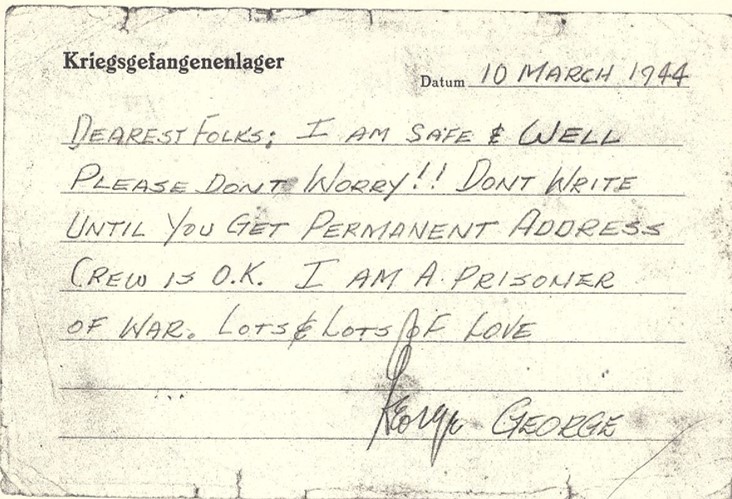As a sales professional, you are a consummate knowledge worker; regardless of the product or service that you sell, the value that you personally bring to the transaction or relationship is your stock of differentiated, relevant knowledge.
There’s bad news and good news in that fact. The bad news is that you are in a race to stay ahead of constantly accumulating and accumulating information, which is ever more accessible to all. How do you offer differentiated information when everyone has access to the same information?
The good news is that there are four essential forms of knowledge that contribute to your success in sales, and only one is easily accessible to all. The four forms are:
- Know-What
- Know-How
- Know-Who
- Know-Why
Know-What is the vast accumulation of facts and information about the world that you need just to function in our society and economy, beginning with what you learn in school and continuing with your work education. In selling terms, it’s the information you need to succeed at feature-benefit selling, about your product or service, your company, competition, etc. It’s the most easily accessible form of knowledge, which is why your prospects and customers have so much more of it before they even speak to you.
Know-what comprises the bulk of search engine knowledge, which is why it’s tough to differentiate yourself if it’s all you have. That said, it’s still important to accumulate and learn as much as possible. I disagree with those people who say you don’t need to stuff your head with facts since you can easily look them up. The more you already know, the easier it is to learn more, and there’s something impressive about having immediate command of the facts during the free flow of conversation.
Know-How is the ability to transfer know-what to accomplish useful purposes. It’s the difference between knowing your product’s features and benefits and being able to show your customer how to use those differentiators to solve their problems and improve their processes and operations. It’s born of experience – as long as you learn from that experience. As the saying goes, some people have ten years’ experience, and some have one years’ experience ten times.
Know-how is hard-won and deep expertise, which is not something that others can easily pick up on the internet. Research has shown that experts have the ability to quickly size up a complex situation and make a good decision almost instantly. They actually consider less information and fewer options than novices.[1] It’s not because their accumulated knowledge and experience is not important; on the contrary, all that knowledge helps them recognize and act on patterns that they can “see” at a glance. That level of insight can make you extremely valuable to your customers.
Know-Who also requires time to accumulate. It’s the human element, knowing the relevant stakeholders as actual people, their personal motivations and fears, and understanding the informal and real decision making processes in the organization.
Think of it as social capital, because the more you get, the easier it is to get more. Know-who is also the most personal form of knowledge and the hardest for others to replicate.
Know-Why is the rarest form of knowledge, in my experience and the most valuable for you and your customers. It is an understanding of the context and big picture, the ability to see the system as a whole with all its interconnected parts and unintended consequences, and to understand the business and personal motivations that drive the decisions you seek.
If you know what, how and who, you can be very responsive and valuable to your customers, but only know-why can take you beyond responsiveness. It’s the type of knowledge you need to challenge your customers when they are wrong, or have incomplete information, or have an unclear idea of where they need to go. It’s what gets you a seat at the table of the top decision makers, and what gets them to call you to ask for your opinion before they make a big move.
Although know-why is rarer than the other forms of knowledge, it’s not intrinsically more difficult to understand and acquire. It just requires a different mindset – a mindset that makes you curious about your customer’s business, about what their customers care about, about their industry, and about broader economic and social trends that they need to respond to.
How much do you know about what, how, who and why? How much did you learn today, and how much more will you know tomorrow?
 I had a bit of a ticklish dilemma in reviewing this book. Bob Terson asked if I would write a blurb recommending Bob Rickert’s book, Profit Heroes: Breakthrough Strategies for Winning Customers and Building Profits
I had a bit of a ticklish dilemma in reviewing this book. Bob Terson asked if I would write a blurb recommending Bob Rickert’s book, Profit Heroes: Breakthrough Strategies for Winning Customers and Building Profits. I agreed, but candidly I was not looking forward to it. I’ve written a book about the same topic, so why should I recommend another author who may take away a sale?
So I put it off for a while, but a promise is a promise, and the deadline was approaching, and I decided to open it up and slog my way through it.
Within the first few pages, though, it changed from a chore to a pleasure, mainly because Rickert approaches the teaching process through story. In any major complex sale, there are at least three stories: the winning sales team’s, and the losing sales team’s, and the customer’s. Rickert opens the book with two chapters that tell a story from the first two points of view. Two companies are competing to win a deal for 20 paint spray guns used in a manufacturing facility. At first glance, it seems like it will be no contest.
The losing sales team tells their story first, and even though you know they are the eventual losers, there’s still an element of actual suspense, because they seem to have done almost everything right. As the incumbent, they do a thorough job of matching their solution to the customer’s requirements, they line up supporters in all the departments that are involved in the decision, and they can quantify an impressive past profit impact on the customer’s operations.
The winning sales team is behind in every way but one: their offering includes a software component that enables them to integrate their spray guns’ production data with the customer’s ERP software. They use that one significant difference to build a profit improvement case which allows them to gain access to the C-Level and change the rules of the competition. In fact, their very weakness turns out to be a strength, because they are not already locked in to the technical/solution path.
The stories are the strength of the book, because they pull you in, set the context, and make the ideas real. Yet the real meat of the book is Chapters 5-9, which explain the actual practical steps and techniques to become a profit hero for your customers and your own company. This is the main reason I recommend this book. Recent books have told us that we need to challenge our customers with fresh insights, but Profit Heroes shows you how. It’s a useful primer on how to research your customer’s business, analyze their financial condition, and use that information to reach and convince high level decision makers.
The book closes with a third story: the customer’s point of view. They explain how their idea of what they needed was changed by the winning account manager. While much is made of the fact that customers are now better informed than ever, that is no guarantee that they are actually better informed about the right things, or are attacking their perceived needs at the right level. In so many cases, there is still an empty place at the table for the profit-centered sales professional with the perspective and the skill to show the way.
When you can do that, you will be a Profit Hero for your customers, your employer, and yourself.
So, should you read Profit Heroes or Bottom Line Selling: The Sales Professional’s Guide to Improving Customer Profits? Read both – it’s too important to leave it to chance.
The first Second Lieutenant Malcolm, my father George, received his commission in the US Army Air Corps on May 8, 1943. Just a few short months later, he was in combat over the skies of Europe as a navigator in B-17s, and ten months later was a prisoner of war after being shot down on his 16th mission.
This telegram his parents received from the War Department began a period of worry during which his mother’s hair turned completely gray.
After three months they finally received this postcard:
Second Lieutenant Malcolm left a lot of good friends behind in the aerial battlefields, and he finally rejoined them in 2009.
A new Second Lieutenant Malcolm has just added a second link to the chain. Almost exactly 71 years after the first, my nephew—and George’s grandson—Kirk Malcolm was commissioned a second lieutenant in the United States Marine Corps after graduating Friday from the Naval Academy. That’s him on the right in this picture:
The new 2LT Malcolm enters the service when his country is technically at peace after 13 long years of war. No one can predict the future even a few months out, but the simmering international situation does not promise slow and easy times ahead. Regardless of what the future holds, he and his classmates are prepared to serve their country as courageously and honorably as their fathers and grandfathers did.
On this Memorial day, we remember those who went before and honor those who serve today.
I had to answer a question yesterday about tricks to overcome being nervous before a presentation, and it sparked the thought that one of the main reasons people get nervous is that they often are presenting to an audience that has far more experience and knowledge than they do. My answer to that is not a “trick”, it is a simple but deep truth: you have earned the right.
I have a friend who is the head chef of one of the excellent seafood restaurants here in town. Every Christmas, we host his family for dinner, and I cook the main course, which is tenderloin with my own secret marinade. Other friends have asked me if I’m ever intimidated by the fact that I have to cook for a chef, and I always answer no. The reason is that I’m not trying to show I’m a better cook than he is. That would be ridiculous. In fact, if he wanted to he could probably cook a steak way better than mine. But on that particular day, I am serving my own specialty, I know it’s wonderful, and I know it’s exactly what everyone wants.
You should think of that presentation you’re about to deliver in the same way. Maybe others have more experience or technical knowledge than you do, but you know more about that specific topic, on that given day, than anyone else in the room – otherwise, someone else would be speaking about it. And even if that were not true, you have your own opinion or perspective on the topic, and you have earned the right to voice that point of view through your deep and thorough preparation. You have earned the right to be the top expert in the room for the time you have the floor.
As the saying goes, too many cooks spoil the broth. Throw all the other cooks out of the kitchen – at least mentally – and get to work!








